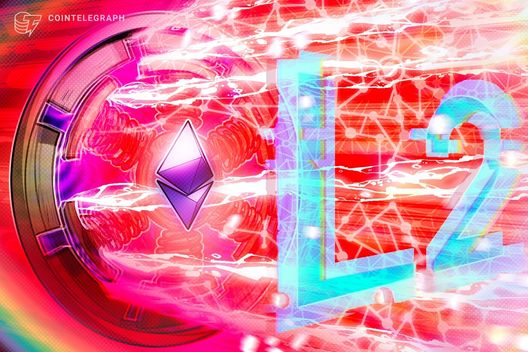In a recent statement shaking up the cryptocurrency community, Anatoly Yakovenko, the co-founder of the Solana blockchain, has raised concerns about the security and centralization challenges facing Ethereum’s layer-2 networks. As Ethereum continues to evolve, layer-2 solutions have emerged to enhance scalability and transaction speed, making it a staple in the burgeoning world of decentralized finance. However, Yakovenko argues that these layer-2 networks are not without their flaws, highlighting the potential vulnerabilities that could undermine the ecosystem’s integrity.
Yakovenko’s insights shed light on a critical discussion within the crypto industry about the balance between efficiency and security. With an increasing number of users relying on layer-2 solutions for their transactions, the call for a deeper examination of their structural architecture grows louder. The fears of centralization—where control is concentrated in the hands of a few—is particularly alarming, as it can contravene the decentralized nature that blockchain enthusiasts champion.
“The rapid adoption of layer-2 solutions must not come at the expense of security,” asserts Yakovenko, highlighting a growing need for robust governance models in these systems.
The ongoing debate brings attention to the broader implications for Ethereum’s future, as developers and investors alike weigh the benefits of scalability against the risks posed by potential security breaches and centralization. These concerns echo through discussions on various cryptocurrency forums and social media platforms, reigniting the critical dialogue about the underlying principles that should guide the development of blockchain technologies.
Ethereum Layer-2 Security and Centralization Issues
Key points regarding the security and centralization issues of Ethereum layer-2 networks as highlighted by Anatoly Yakovenko:
- Security Concerns
- Ethereum layer-2 networks face vulnerabilities that could lead to potential exploits.
- The reliance on shared security among different layer-2 solutions can be problematic.
- Centralization Risks
- Many layer-2 solutions exhibit centralized control, undermining Ethereum’s decentralized ethos.
- Centralization can lead to a single point of failure, posing risks for users and investors.
- Impact on Users
- Users may face increased risks related to their investments and assets on layer-2 networks.
- A better understanding of these issues can influence user choices regarding Ethereum and alternative solutions.
- Implications for Developers
- Developers must navigate these security and centralization challenges when building on layer-2 networks.
- Awareness of these issues can drive innovation towards more secure and decentralized solutions.
Examining Security Concerns in Ethereum Layer-2 Networks
Recent insights from Anatoly Yakovenko, a prominent figure in the blockchain community and co-founder of the Solana network, highlight significant vulnerabilities within Ethereum layer-2 solutions. This criticism underscores the ongoing debate about scalability, security, and decentralization in the rapidly evolving crypto landscape. While Ethereum layer-1 has established a robust foundation, the reliance on layer-2 protocols raises questions about potential centralization and security risks.
In contrast to Ethereum’s layer-2 approach, Solana promotes a high throughput and low transaction costs without compromising decentralization. This competitive advantage might attract developers and users who prioritize not just speed but also a resilient network structure. However, Solana’s own challenges, such as frequent outages and lower security compared to Ethereum’s entrenched infrastructure, could deter some investors and developers looking for stability and proven reliability.
The implications of Yakovenko’s statements are multifaceted. On one hand, they could propel Ethereum developers to prioritize addressing these security flaws, thereby enhancing the network’s overall robustness. On the other hand, potential investors might grow wary, questioning the viability of layer-2 solutions amidst rising concerns. Detractors of Ethereum, particularly those aligned with Solana and other competitors, may seize this narrative to advocate for alternative platforms that emphasize decentralization.
Moreover, users and developers who are deeply embedded in the Ethereum ecosystem may face upheaval as they navigate the balance of innovation against security. They could benefit from heightened awareness and discussion surrounding these vulnerabilities, allowing them to make informed decisions about adopting or investing in layer-2 solutions. Yet, for those committed to Ethereum, the criticism could pose challenges, as they might need to justify their technology choices against potential security and centralization pitfalls.
















